|
|
|
|
|
This review page is supported in part by the sponsor whose ad is displayed above
|
|
 |
|
Synchronicity. A Cypriot friend had purchased my Signature 30 review loaner from Vinnie a year ago. Having since moved to Switzerland, I happened to visit him in his new digs precisely when his new Signature 30.2 arrived. The system was anchored by Audio Consulting's new Double Rubanoïde speaker, augmented below 100Hz by two JL Audio active subwoofers. Front end duties were upheld by either a C.E.C. entry-level belt drive transport slaved to a LessLoss 2004 DAC with attenuator; or an Alex Peychev-modifed top-line Esoteric universal player in NWO 3.0 iteration, meaning Peychev had stripped the internal guts to be replaced by 20 paralleled 32-bit AKM converters per channel, buffered by one JJ ECC99 per side and attenuated by remote in the analog domain to allow amp-direct connection. A laser turntable provided a true analogue reference point against the RedBook standard and some of my own compilation CDs.
|
|
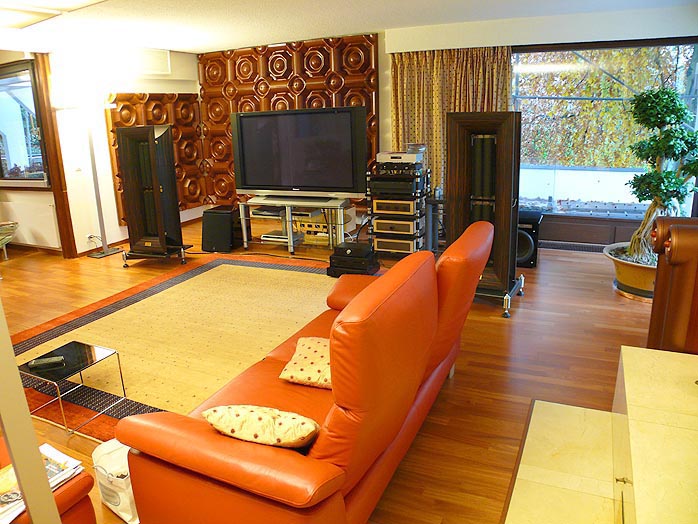 |
|
Further reference points bear mention. Among speakers, my friend currently owns Rethm Saadhanas, Living Voice Avatar OBX-RWs and Avantgarde Acoustic 19-ohm Meta Duos. Among amplifiers, the legendary Kondo Ongaku, Kondo Gakuoh monos, nearly all Yamamoto amps made, top Art Audio, Butler, Tektron, Wavelength and Wyetech Labs models, Melody's I2A3, the big Lavardin - in short, mostly glowing bits of high pedigree. Prior digital included dCS and Zanden's best; present digital beyond the already mentioned a professional recorder with 16GB solid-state memory cards, i.e. no moving parts. That's the future, here already for the forward-thinking.
|
|
|
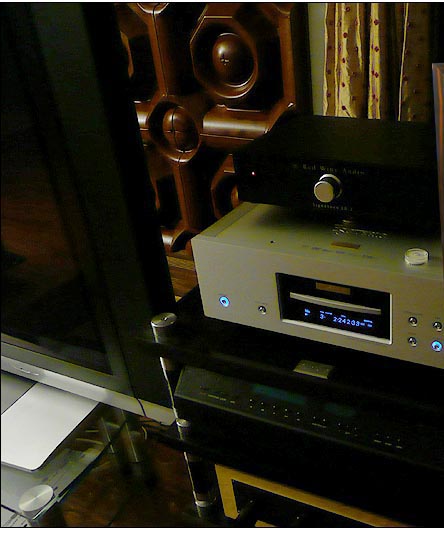 |
 |
|
| The Signature 30.2, in Esoteric-direct mode, unceremoniously dispatched a fine $10,000 preamp and battery-powered $45,000 monoblocks to the pit stop for engine replacements. While this phrasing reads amusing, the fiscal tally without Red Wine's T amp was dead serious. Anyone suspecting that realsization or sensible downsizing must incur audible setbacks as though by definition is quite mistaken. Naturally, speakers copasetic with 30 watts are mandatory in our scenario. The Rubanoïde 103dB resistive load certainly |
|
qualified in a big way. Source cred matters too. The turbo-charged Esoteric clearly counted. With those strategic bits in place, the petite Signature 30.2 proved sonically superior to - well, you'd love to read brands and model numbers. Seeing how system specific many of these matters are, let's just say that my friend, nearly embarrassing himself with glee and shocked insight, volunteered that perhaps he no longer needed any of his true blue-blooded amps. You've seen the list above. Do the math.
|
|
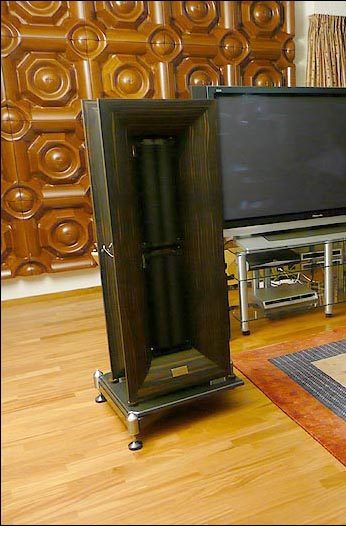 |
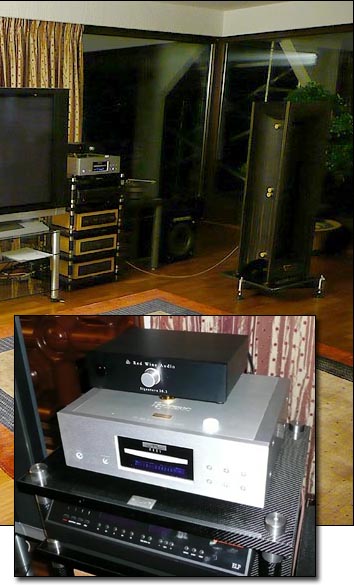 |
|
| Forget trophy audio bragging rights though. When money truly is no issue where you can afford the best of the best, it's quite difficult to explain to the indoctrinated why you've |
|
'settled' for the RWA unit. It's not merely the size and price that are modest. The whole Tripath power processing chip concept seems so quaint especially in light of the many Far Eastern budget offerings. Don't be misled into 'make do' illusions. With appropriate loads -- and just what exactly constitutes that will be covered later -- the Signature 30.2 is a true giant killer. Just as Dan Wright's LS-36.5 valve preamp operates in a different league from his SWL 9.0SE maiden product, so does the 30.2 outclass the earlier 30. And by a similar margin too. For one, there's more warmth and image density. Simultaneously, resolution is heightened and bass is better. The combined effect is not a subtle matter. You'll hear it stone-cold out of the substantial shipping box. If you're a Platinum card amp, think Aliens: "Be afraid, very afraid."
The old adage of "power supply with amplifiers is 80% of the game" might prejudge certain thinking folks against batteries. After all, very few such amps have ever been attempted. If this was so readily doable and superior to brute class A supplies, why hasn't it been done en masse long before? Efficiency surely is key to answering this reasonable question. At 90% efficiency, class D does lend itself to battery power. And Vinnie's sealed lead-acid recipe at mid-power ratings makes a rather undeniable case. Based on the above showing and equivalent experiments in Coral Bay, there are no signs of current starving, of dynamic compression, of insufficient drive on bass transients. Quite the opposite in fact. Exactly how and why two batteries of a footprint smaller than a sandwich but about twice as thick as a nicely filled one would act so butch and dynamically liberated is for the engineers to figure out and explain.
Subjective listeners meanwhile can rest assured that John DeVore's Nines for example demonstrate just how potent their diminutive artillery of dual 6es really is. As stated in their review, the Nines are intrinsically leaner than the 10-inch widebanders in my Zus Definitions and WLM Grand Viola monitors. Coming off the latter's tone density, dynamics and textures, the Nines can initially strike one as somewhat bland - before amplification has been adjusted accordingly. And Vinnie's Signature 30.2 is just that; accordance squared. It transforms the Nines from gaunt vegetarians into vital carnivores. Everything fills out and colors deepen. It's quite the morph. As is the above - also a made match.
|
|
 |
|
To conclude first impressions, the new Signature 30.2 is even warmer than its predecessor. Yet this warmth isn't at all synonymous with veiling. Ambient recovery and inner detail are very good and far superior to what one usually gets with warm amps. The 30.2 also scales in very linear fashion, meaning things simply get louder even in a very large space. Nothing splinters into partials where certain frequency segments lead and others follow. My friend's Swiss living slash listening room quarters segue into an open office to the left and an open eating area/kitchen behind the listening seats. It makes for substantial air volumes which nonetheless presented no audible challenge even at happy levels. The 30.2 does not roll off the treble to curtail air. Its noise floor and hence resolution, nearly by definition, will be superior to most tube amps made. Perhaps most surprising are the fulsome textures one normally obtains from valves exclusively.
A recent experience with capacitor swaps in a preamp showed just how potent their influence can be in strategic junctures. In my Supratek Cabernet Dual, the original Auricaps create a very special sense of space and air. This dramatically constricts and diminishes with the vaunted VCaps which Supratek clients had clamored for. Unless something unexpected occurs beyond 400+ hours, the designer and I agree that the Auricaps in his circuit make the real magic. Vinnie too has changed his coupling caps. I suspect that the tone/texture advances of the 30.2 are because of them. Be that as it may, the Signature 30.2 is considerably warmer than a fast modern single-ended triode amp in the Trafomatic/Yamamoto vein. But it's certainly no slower. That's the really mean trick - to marry fast reflexes and jump factor to the comfort vibe of dense tonality where bright, thin and harsh are never part of the dictionary.
|
|
|
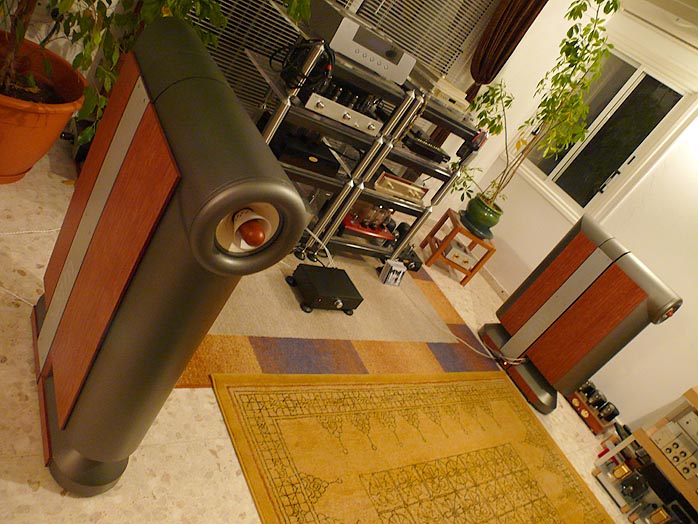 |
|
There's every indication in fact that the Signature 30.2 is the perfect driver for my new Rethm Saadhanas, now with the felt strips reinserted behind their Lowther diaphragms to optimize performance as originally intended by the designer. Purportedly, the felt minimizes internal reflections from the basket ring back through the diaphragm. In practice, the felt sublimates the remaining presence region energy to almost completely flat. What the Signature 30.2 brings to the near otherworldly lucidity of the Saadhanas is this-world sunshine with its associated warmth and human comfort. In audiophile terms, density and tonal mass, exactly what any doctor would prescribe for a Lowther. Taking nothing away from Rethm's signature suchness and speed whatsoever, the Tripath amp simply adds girth and poundage across the range, i.e. quite unlike most triode amps which are more selective where they shine and where they take away.
If popular wisdom has it that you may not drive a Lowther with transistors, then Lowthers and class D amps must be off-the-charts taboo. Well, it's time for Lowtharios to be their baddest selves. Sometimes the most direct way to heaven is straight through hell. Vinnie Rossi's Signature 30.2 is the hammer on the Saadhana's DX55 and I can't see why it wouldn't be on other speakers that use these tweaky transducers. |
|
|
 |
 |
|
|
|
 |
|
|
|
|
|
|
|
|
|